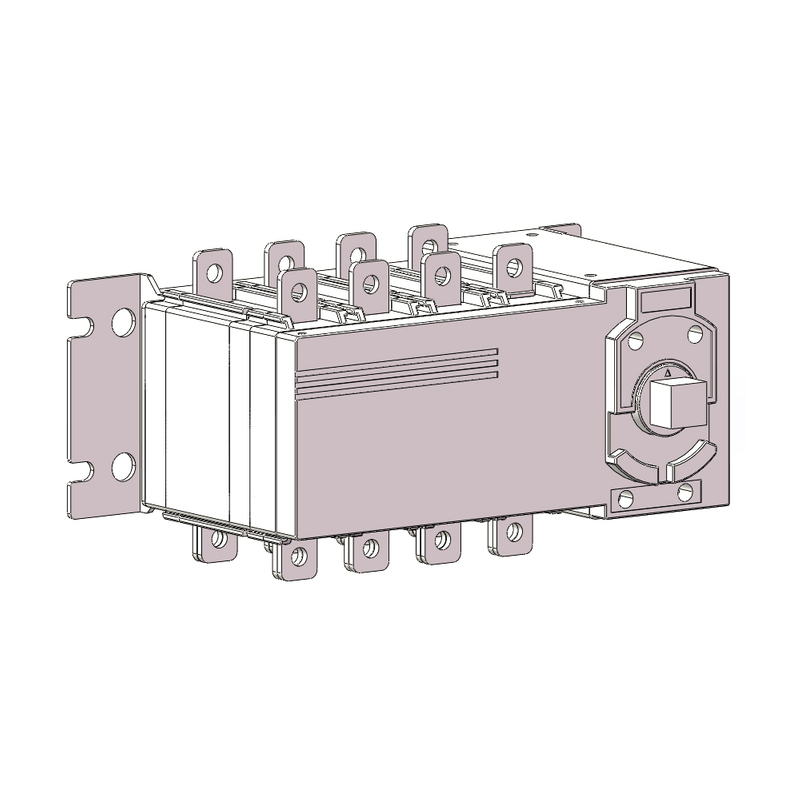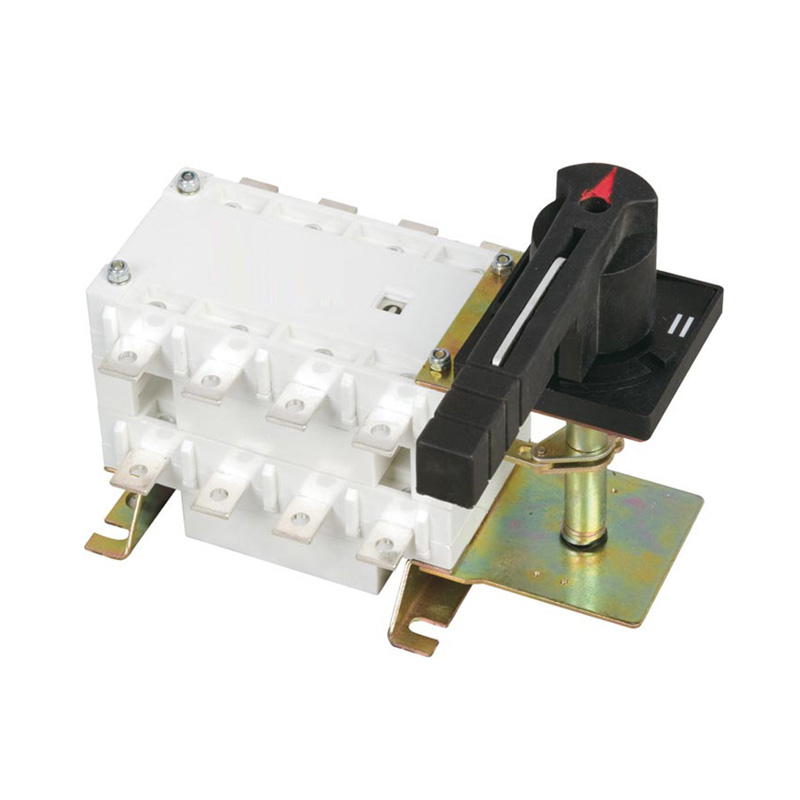- All
- Product Name
- Product Keyword
- Product Model
- Product Summary
- Product Description
- Multi Field Search
Views: 286 Author: Site Editor Publish Time: 2025-10-28 Origin: Site








In modern electrical systems, ensuring a continuous power supply is crucial. Power outages, whether planned or unexpected, can disrupt homes, businesses, and critical infrastructure. A Manual Transfer Switch (MTS) provides a reliable solution to switch between a primary power source and an alternative, such as a generator. This article explores how a Manual Transfer Switch works, its key components, types including the Manual Changeover Switch, and applications like generator changeover.
By understanding its design and functionality, users can make informed decisions for safe and efficient power transfer.
A Manual Transfer Switch is a device that allows users to manually switch the electrical load from the main power supply to a backup power source. Unlike automatic transfer switches, which operate without user intervention, manual switches require an operator to change the power source.
Key Features of a Manual Transfer Switch:
Reliable switching mechanism for power backup
Clear position indicators to show which source is active
Mechanical interlocking for safety
Compatibility with generators and utility power
Typical Specifications of Manual Transfer Switches
| Feature | MTS Series | RDGLZ Series | RDQ1 Miniature Series |
|---|---|---|---|
| Rated Voltage | AC 660V | AC 660V | AC 660V |
| Rated Current | 100A–630A | 125A–3150A | 16A–63A |
| Operating Mechanism | Spring-accumulating instant-release | Spring-accumulating instant-release | Manual lever with three positions |
| Design | Modular, fiberglass-reinforced | Modular, fiberglass-reinforced | Compact, miniature modular |
| Applications | Industrial & commercial power switching | Low voltage load changeover & safety isolation | Small power systems & low-current applications |



The Manual Changeover Switch is a subset of manual transfer switches, typically used in low-voltage applications. It allows switching between two sources but requires human intervention for operation.
Differences Between Manual and Automatic Transfer Switches:
Operation: Manual requires user action; automatic switches detect power loss and switch automatically.
Cost: Manual switches are generally more affordable due to simpler design.
Applications: Manual switches are widely used in homes, small businesses, and low-voltage equipment; automatic switches are preferred for critical systems like hospitals.
Manual vs Automatic Transfer Switch Comparison
| Feature | Manual Transfer Switch | Automatic Transfer Switch |
|---|---|---|
| Switching Method | Manual | Automatic |
| Cost | Lower | Higher |
| Installation | Simple | More complex |
| Best Use | Homes, small offices, generator changeover | Hospitals, data centers, industrial plants |
| Safety Mechanism | Mechanical interlock | Automatic fail-safes |
Understanding the internal components is crucial to grasp how a Manual Transfer Switch works:
Most manual transfer switches, such as the MTS and RDGLZ series, consist of two isolation switches. These switches physically separate the primary power source from the backup source to prevent back-feeding and ensure safety during operation.
Spring-accumulating and instant-release mechanism: Found in MTS and RDGLZ series, allows rapid making and breaking of contacts for double-gap separation.
Manual lever mechanism: Common in miniature switches like RDQ1, providing three positions to select the power source.
The casing provides high dielectric strength, durability, and resistance to environmental conditions, ensuring safe operation over long-term usage.
Using a Manual Transfer Switch involves a few simple steps:
Turn off connected appliances: Ensure all devices are safely powered down before switching.
Disconnect the main power: Move the switch lever to the “OFF” or neutral position.
Engage backup source: Connect the generator or secondary source by moving the lever to the appropriate position.
Check indicators: Confirm the selected source is active via position indicators.
Power appliances: Gradually restore power to connected loads.
Note: Always follow manufacturer instructions for safe handling and operation.
One of the most common uses of Manual Transfer Switches is for generator changeover. During power outages, users can manually switch from utility power to a generator, ensuring uninterrupted electricity supply.
Homes: Backup power for critical appliances
Small Businesses: Protect sensitive equipment during outages
Industrial Facilities: Isolate circuits for maintenance and safety
Manual Changeover Switches like the RDGLZ series allow switching between two groups of low-voltage loads, ensuring operational flexibility and enhanced safety.
Cost-effective compared to automatic solutions
Simple design and easy maintenance
Reliable for occasional or planned power switching
Mechanical interlock prevents accidental back-feeding
Suitable for a wide range of current ratings (16A–3150A)
Advantages Overview
| Advantage | Description |
|---|---|
| Cost | Lower installation and maintenance costs |
| Reliability | Simple, proven mechanical design ensures consistent operation |
| Safety | Mechanical interlocks and fiberglass-reinforced casing reduce hazards |
| Flexibility | Compatible with generators, homes, commercial buildings |
| Durability | Modular, reinforced construction withstands repeated use |
Always consult a qualified electrician for installation.
Verify the rated current and voltage of the switch matches your system.
Ensure mechanical interlocks function properly.
Regularly inspect and maintain contacts and insulation.
Keep clear labels for power source positions.
Inspect contacts periodically for wear or corrosion.
Test switching mechanism every few months.
Clean the casing to prevent dust accumulation.
Lubricate moving parts if recommended by manufacturer.
Replace damaged parts immediately to avoid unsafe operation.
Q1: What is the difference between a Manual Transfer Switch and a Manual Changeover Switch?
A: A Manual Changeover Switch is a type of Manual Transfer Switch used primarily for low-voltage or small current applications. Both require manual operation.
Q2: Can I use a Manual Transfer Switch for generator changeover at home?
A: Yes, it is ideal for safely switching between utility power and a backup generator.
Q3: How often should I maintain my Manual Transfer Switch?
A: Inspect and test it at least once every 6–12 months to ensure reliable operation.
Q4: What are the safety features of a Manual Transfer Switch?
A: Mechanical interlocking, fiberglass-reinforced casing, and clear position indicators prevent back-feeding and accidental operation.
Q5: What is the rated current range for Manual Transfer Switches?
A: Depending on the model, ranges vary from 16A (RDQ1 series) up to 3150A (RDGLZ series).
Q6: Can a Manual Transfer Switch be used in industrial applications?
A: Yes, especially models like the MTS and RDGLZ series, suitable for commercial and industrial power distribution systems.